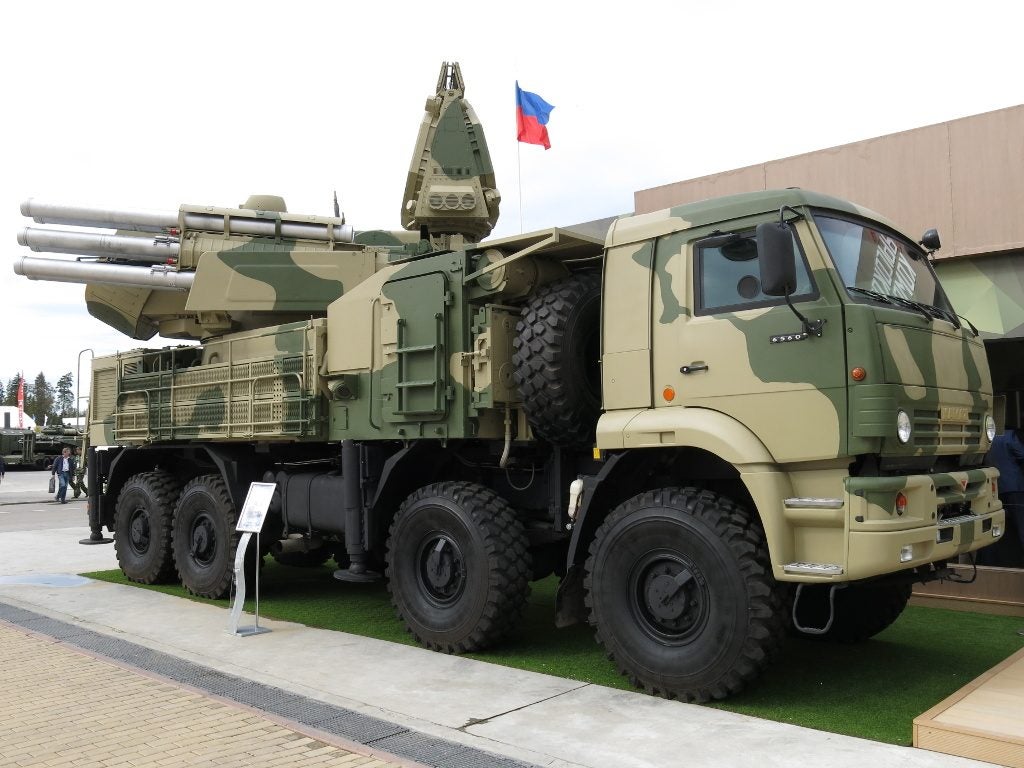Myanmar Orders Pantsir Anti-Air Weapons and Orlan UAVs from Russia
Myanmar (also known as Burma) has ordered Pantsir S-1 combined gun/missile anti-aircraft systems and Orlan-10E UAVs from Russia. The deal was agreed during a visit by Russia’s Minister of Defense, Sergey Shoigu, to the Southeast Asian country on January 22.
Speaking of the agreement the Commander-in-Chief of Myanmar’s armed forces, Min Aung Hlaing, told the press that: “Just like a loyal friend, Russia has always supported Myanmar in difficult moments.”
Myanmar has been on something of a spending spree in updating its military equipment, and Russia has become an important supplier. Since 2001 Myanmar has purchased 30 MiG-29 aircraft, 12 Yak-130 combat training aircraft, six Su-30SME, 10 Mi-24 and Mi-35P helicopters, 8 “Pechora-2M” anti-aircraft missile systems from Russia, as well as radar stations, armored vehicles and artillery systems.
The sale is a success for Russia in that it represents the first foreign sale of the Orkan-10E UAV. Though marketed for the last decade and seeing use in Ukraine and Syria, this system has so far not enjoyed great success in the export market.
The purchase of Pantsir will also be welcome. Russian-made air defense systems suffered a hard 2020 during several conflicts, but despite this they can still represent a formidable threat to intruding aircraft.
Which raises an interesting question. Why are the Tatmadaw – the Myanmar military – purchasing air defense systems? Currently the country is enjoying generally good relations with its neighbours. The same cannot be said for much of their own population.
The Tatmadaw has been engaged in an on-and-off civil war since 1948. This is largely a result of the central, Burman-dominated, government seeking to impose its control over ethnic minority populations that largely live on the periphery of the country.
The fighting is extensive. Though information from the conflict zones can be difficult to obtain due to the Tatmadaw stifling communications in-and-out of those areas, heavy fighting occurs periodically in the west of the country against the Arakan Army, while skirmishes have continued for a decade against the Kachin Independence Army and their allies in the north.
Additionally, there has recently been an uptick in fighting on the Thai/Burma border in the east of the country against the Karen minority, including reports of atrocities against civilians. Peace talks have been ongoing for several years, but recent developments would indicate that there seems little hope of peace being achieved.
With this long-running and ongoing civil conflict blighting the country, it does look like the Tatmadaw’s purchase of modern weapons systems – including their commissioning of the country’s first submarine in 2020 – look more like vanity projects for Myanmar’s powerful Generals who still effectively run the country despite notions of increased democracy.

